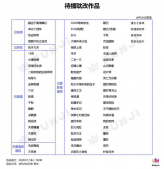1、可以在mode参数中添加'b'字符。所有适合文件对象的相同方法。然而,每种方法都希望并返回一个bytes对象。
|
1
2
3
|
>>> with open(`dog_breeds.txt`, 'rb') as reader:>>> print(reader.readline())b'Pug\n' |
2、当打开文件并单独阅读这些字节时,可以看到它确实是一个png文件:
|
1
2
3
4
5
6
7
8
9
10
11
|
>>> with open('jack_russell.png', 'rb') as byte_reader:>>> print(byte_reader.read(1))>>> print(byte_reader.read(3))>>> print(byte_reader.read(2))>>> print(byte_reader.read(1))>>> print(byte_reader.read(1))b'\x89'b'PNG'b'\r\n'b'\x1a'b'\n' |
知识点扩展:
读取文件的字节流数据,将其转换为十六进制数据
|
1
2
3
4
5
6
7
8
9
10
11
12
|
def read_file(): with open('./flag.zip','rb') as file_byte: file_hex = file_byte.read().hex() print(file_hex) write_file(file_hex)def write_file(file_hex): with open('new.txt','w') as new_file: new_file.write(file_hex)if __name__ == '__main__': read_file() |
读取文件的字节流数据,将其编码为base64并输出
|
1
2
3
4
5
6
7
8
9
|
import base64def read_file(): with open('./flag.zip','rb') as file_byte: file_base64 = base64.b64encode(file_byte.read()) print(file_base64)if __name__ == '__main__': read_file() |
将十六进制文件转化为字节流文件写入
|
1
2
3
4
5
6
7
8
9
10
|
import structa = open("str.txt","r")#十六进制数据文件lines = a.read()res = [lines[i:i+2] for i in range(0,len(lines),2)]with open("xxx.xxx","wb") as f: for i in res: s = struct.pack('B',int(i,16)) f.write(s) |
以上就是python用字节处理文件实例讲解的详细内容,更多关于python使用字节处理文件的资料请关注服务器之家其它相关文章!
原文链接:https://www.py.cn/jishu/jichu/29107.html





